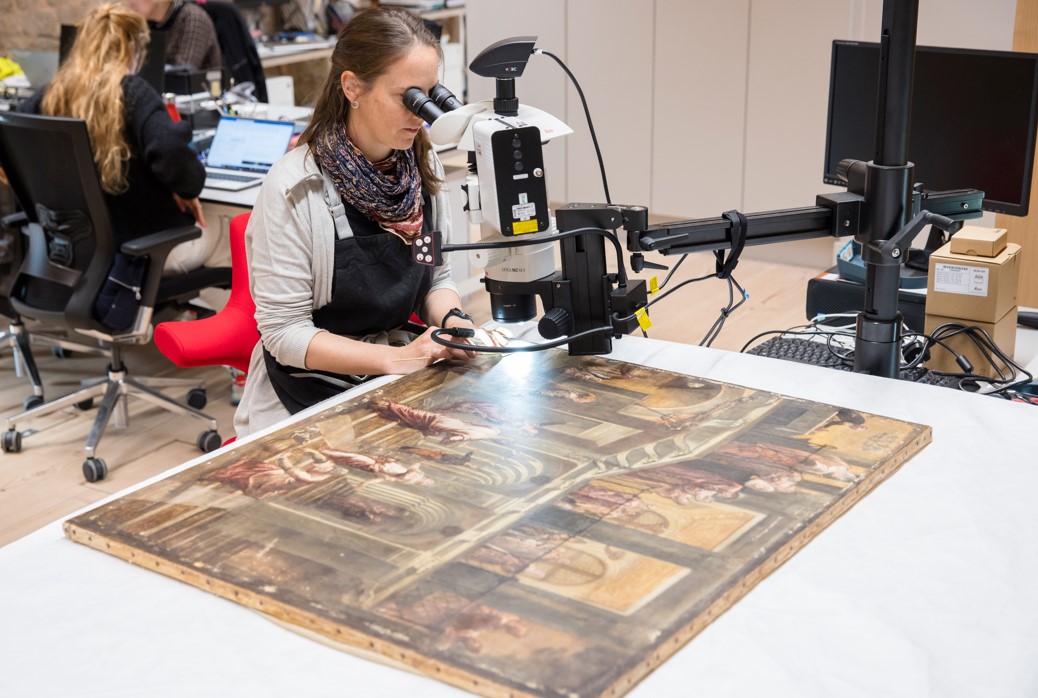09 December 2024
|
Have you ever wondered about which colours our ancestors painted their homes, walls, doors, skirtings, even gates and fencing too? Now the National Trust’s new laboratory to research paint samples gathered from across its properties to see what clues the many hidden layers of paint can unlock.
New insights into the colourful world of the past are being revealed at a new National Trust archive of thousands of historic paint samples.
About the National Trust new paint laboratory
Centuries of colour history to be revealed as National Trust establishes new laboratory to research paints used in the past. The new facility based in Kent has been made possible thanks to funding of £621,962 from the UKRI Arts and Humanities Research Council (AHRC).
The funding will cover the first two years to create a new laboratory and the paint sample archive with a similar amount in future to cover the recruitment and research work of the Trust’s first in-house heritage scientist in the years afterwards.

About the National Trust's paint sample archive
The Trust’s collection of paint samples, dating from the second century AD to the present day, covers many thousands of examples gathered across the country over many decades and includes samples from paintings, buildings and decorative arts as well as interiors of historic buildings and even exterior woodwork, fences and gates. The cataloguing of the collection at the new laboratory at the Trust’s Royal Oak Foundation Conservation Centre at Knole near Sevenoaks, will open up access and allow researchers to make use of the vast collection of paint samples from National Trust properties for the first time.
'The past was not black and white'!
John Orna-Ornstein, the Trust Director of Curation and Experience said:
“We often think of the past as being black and white but as many National Trust historic houses show, our predecessors loved using colour in the interiors, collections and wider estates. Through this project we will be able to learn about the choices behind colours of the past and where those colours came from, using forensic approaches which will greatly improve our understanding of these special historic places.
“Our collection of paint samples are thousands of tiny cultural assets currently hidden from view, but which we can now make accessible. From some of the earliest decorative schemes in frescoes at Chedworth Roman Villa to 18th century carriages and works by Constable our staff and facilities will have a huge impact on increasing knowledge, understanding and curiosity.”
The paint samples were gathered as part of individual research into buildings or objects owned by the Trust over many years but by bringing them together in a single database, it will ensure they will no longer be studied in isolation and will allow comparisons between similar materials to be made more easily."
Popular colours over time
As well as helping identify the colours used, the samples also reveal materials popular in decorating homes in the past, how tastes and choices of colour changed, and the global trade in pigments and materials used to brighten lives and homes.
In a recent example, an 1881 watercolour painted by William Jackson Browne, the owner of Townend, an historic farmhouse in Cumbria showed a different paint colour for the building’s woodwork. The house timbers had been painted a very dark green for many decades. But after paint sampling confirmed that a dark red shown in the painting was historically correct, the house now been restored to its original colour scheme.

Bath Assembly Rooms. Photo copyright the National Trust
At Bath Assembly Rooms a major conservation project will bring new life to the building including recreating oak floors to match the originals lost in Second World War bombing. Paint research included information from a tiny slice through years of paint from a corner of the card room which has been studied to identify a choice of colours used in the past.

Paint layers from the Card Room at the Assembly Rooms, Bath. Photo copyright Lisa Oestreicher
While several dozen layers were found, it is thought that the most likely choices to match how the room might have been in the past were a Salmon pink and a greenish blue. Similar research is being carried out throughout the building. Paint producers Little Greene are recreating original paints to be used in the refurbishment.
More modest scale properties are included in the National Trust's portfolio. In addition the more humble rooms in the great houses would be of great interest too, to family historians - either whose ancestors worked in such or similar environments, and to note the prevailing trends of each era.







